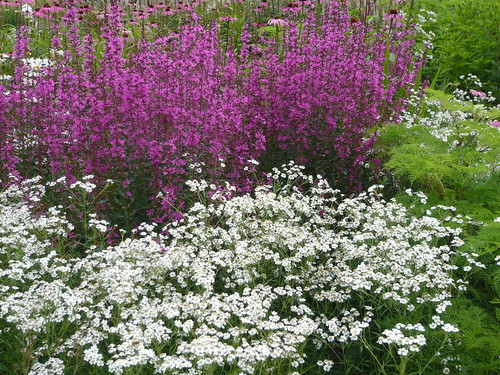Garden Jargon & Terms
What is a Tree or Shrub
There are no hard and fast horticultural rules for these perennial plants. Trees are generally larger than shrubs and bushes.
- A tree is a woody plant that produces a single trunk and an elevated head of branches. Small trees are defined in the UK as 15-30 feet tall whilst large trees are over 60 feet tall.
- A shrub is a woody plant which branches from the base or near the ground with no obvious trunk hence the term shrubbery. Large shrubs are over 10′ but less than 15′, medium 6-10′, small 3-5′ and dwarf and prostrate under 2′.
- A bush is a shrub with stems of moderate length and is smaller or more compact than a shrub. Common parlance has currants, gooseberries and roses as bushes
- Cordons, Espalier, Pyramids and Fans are tree or shrub shapes created by training and pruning.Topiary is pruning and shaping to a shape of the gardeners chosing.
What is an Herbaceous Plant
This is a plant with soft (none woody) stems that dies back to soil level at the end of the year. Many are perennials growing again in following years.
Herbaceous borders are beds for growing your herbaceous plants but a mixed bed is most popular.
What is a Perennial
This is a plant that lives for more than two years given reasonably favourable conditions.
What is a Biennial
This is a plant, often a flower, that is sown one year and performs in the second year then expires.
What is an Annual
An annual is raised from seed, grows and dies in one year. A hardy annual can be sown outside in spring a half hardy annual needs a bit more warmth and protection and is sown indoors or later in the year.
What is the difference between Deciduous and Evergreen
Deciduous plants and trees loose there leaves each year and grow new leaves to replace them.
Evergreens, as the name implies, keep their leaves all year round. Most conifers (cone bearing trees and shrubs) are evergreen except Larch.
Gardeners Jargon
By Will Barrow and Connie Ferr
Pricking Out
After seeds have germinated and started to grow they are pricked out to give them space to grow.. That is separated individually from other seedlings and replanted.
Thinning Out
This process takes weaker seedlings out to give others space and chance to grow.
Planting Out
When a seedling or plant has been grown indoors or in a greenhouse it can be planted out into the garden after it has been acclimatised. This acclimatisation is called hardening off.
Going Out
This is what gardeners have too little time to do except occasionally to the pub.
Hardening Off
Gradually introducing seedlings or plants to normal gardening conditions so they can get used to wind and temperature changes is called hardening off.
Hardy
Used to describe a plant that can stand our British weather conditions. So a plant that will live through our winter is said to be hardy as in hardy perennial or hardy geranium.
Hardwood
This is wood from a broad leaved deciduous tree such as oak, ash, maple, sycamore, walnut or often an imported wood such as mahogany.
Hardened Gardener
What we all become when pests have eaten our prized exhibits, fungal infection has infested our fruit trees and it has rained every day during our summer holiday that we chose to take in the garden.
Forcing
Encouraging a plant to grow or flower earlier than nature intended. Giving extra warmth and light are the usual methods but Rhubarb and chicory are forced by excluding light.
Propagation
Generally plants increase naturally through seed, bublets, layering or root growth. When a gardener gives nature a hand it is called propagation and when a scientist gives a hand it may be via tissue culture or micropropagation.
Heeling In
Occasionally trees or shrubs need a temporary home prior to being planted in their permanent position. To ‘heel in’ dig an angled trench in the ground and lay the roots of your trees in the angled trench. Fill in the trench covering the tree roots with the dug out soil. Water generously and keep moist until you are ready to plant.

